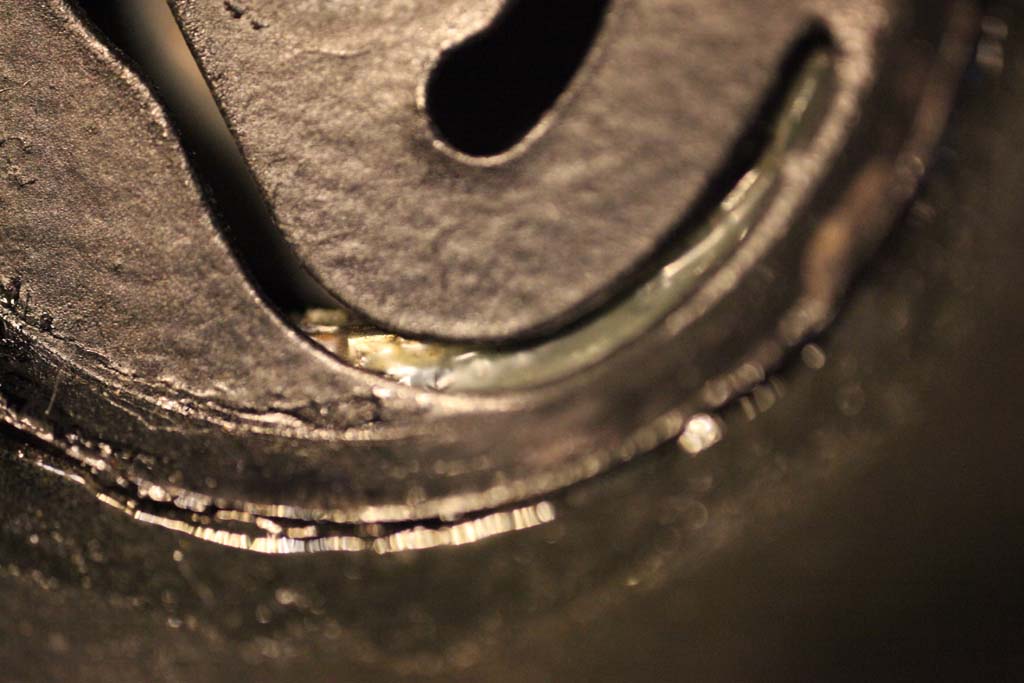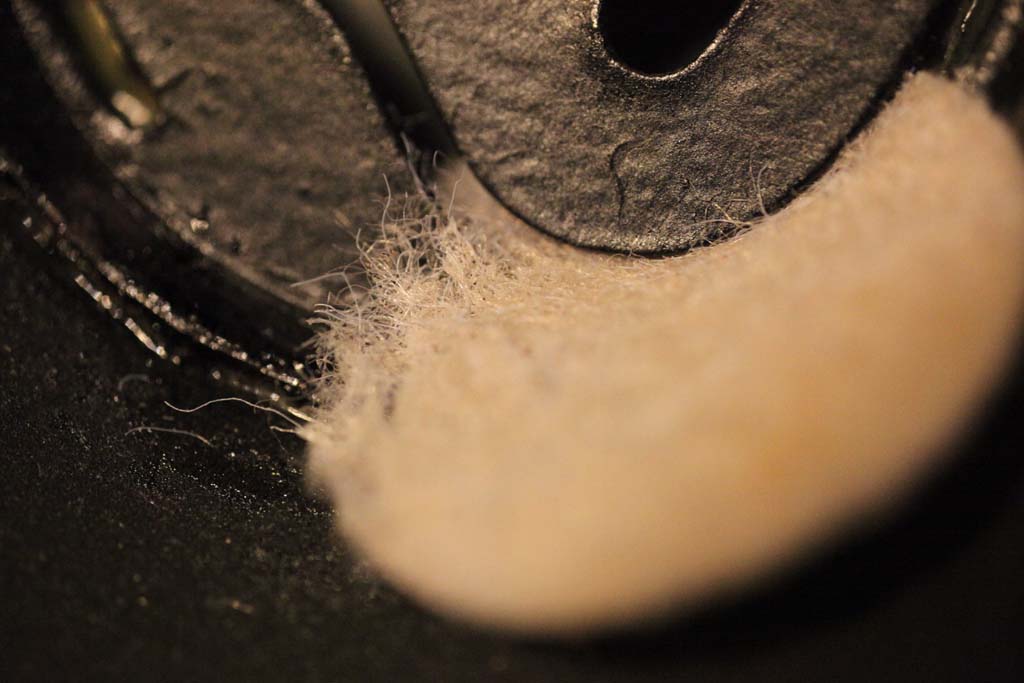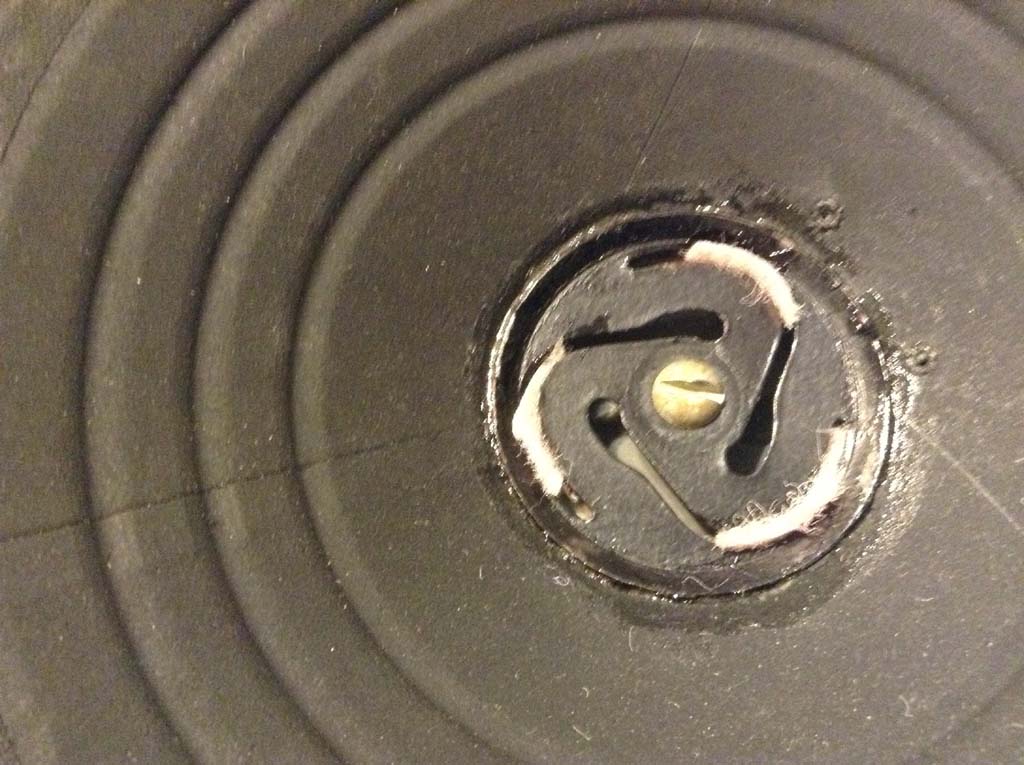Posts: 61
Threads: 5
Joined: Mar 2014
City: Holiday TN
For spiders and basket edges I use toluol and xylene sparingly and plenty of wait time to soften the adhesive. Acetone / lacquer thinner evaporates fast, but works fine to better depending on temperature and the phase of the moon. Sparingly and several times.
I made lots tools out of broken hacksaw and saber blades. Think weird chisels. Some are flat end, some are rounded. some ground offset and use carefully as needed. I grind at around 10 to 15 degrees (swag) and SHARP. Once you get under an edge of the spider slowly moving and rocking the blades lift it. The residual adhesive rubs off without too much trouble.
When cleaning the frame some blue tape over the voice coil gap helps keep the crud out. Standard speaker repair use of tape and compressed air to clean the voice coil gap. Use a good BRIGHT light and plenty of magnification to make SURE the gap is clean. Once is enough take is slow.
Find a couple of old junk worthless speakers to practice on before you attack one you care about. Like anything there is a learning curve littered with destruction.
Take your time with the voice coil cover (Dust cover) in the center. May just want to sacrifice it and buy a modern or make a new felt one. Solvent may loosen the VC windings - no advice.
The warning on shimming (centering) the voice coil is 100% both for spider and cone edge during gluing. Some like shims at 120deg others at 90. I like 90, but can't give you any reason for it. There are special glues for each and they are different. To me it looks and smells like the spider glue is contact cement. The cone is white like a tacky cement from Hobby Lobby, but I admit I buy mine from speaker repair part suppliers.
I like Jamie's idea of a bit of heat. Gun smith screwdriver sets have lots of special ground blades to fit all sorts of special slots if you don't roll your own.
Posts: 61
Threads: 5
Joined: Mar 2014
City: Holiday TN
I didn't read carefully enough about the spider being held by screw instead of glue.
Are you familiar with impact drivers? It is a handle that has a 1/2" square for a socket on the end and comes with adapter and screwdriver bits. Torque the end one way and tapping will loosen and the other tighten.
I've obtained extra bits and filed / ground ends to fit various screw slots.
I use a soft face hammer. The impact drives the blade into the screw while torquing it. Small screws - small brass ball peen. I press down hard and torque to unscrew before I tap.
Just Googled it and see a $13 one. Harbor freight and most auto supplies used to carry them. Just checked and NAPA has them listed. Probably still the same blue metal box.
Not sure what your access looks like. Be sure to support the back side on SOLID base so you can use minimum impact.
Out of desperation before drilling out, I've successfully used mine on almost stripped head #8 Philips and I think (but not sure) #6 even though it looks way too big for the application.
(This post was last modified: 05-22-2014, 07:26 AM by K7Sparky.)
Posts: 15,306
Threads: 531
Joined: Oct 2011
City: Jackson, NJ
Posts: 61
Threads: 5
Joined: Mar 2014
City: Holiday TN
Looks to me like a good one for the impact driver.
Looks to me like the screw goes into the center pole.
Ron can probably verify that it is a continuous chunk of iron to the back and if it is a 1/4" screw.
Set it like the picture on a good hard surface.
Pick a bit that fits snugly in the slot of the screw or grind / file one to fit. They are 3/8" hex drive bits.
Setup the tool for unscrewing. Hold the end and hand torque it and it will toggle depending on which way you twist. You can test you got it correct by butting the bit on a metal surface and pushing down watch for the bit to turn CCW.
Fit the blade into the screw head. Use one hand to push straight down and twist till snug CCW (unscrew). Use a light hammer in the other hand and tap lightly. The tapping jars the threads, pushes the blade solidly into the slot and adds a bit more unscrew torque. You can get a lot of torque if you smack too hard so take it easy. If you must use penetrating oil just a drop or two it wicks and I would not want it around my cone / VC. Trade off would be: Do you want oil or to drill out and retap. The driver can develop way more torque than necessary to twist off the screw.
Might what to set up a practice screw locked into something with a jam nut to get the feel for how it works before you go for the gold.
You will wonder how you lived without one. Great for rusty auto bolts with oil as it jars the threads up and down as well as circular. Alternative when you don't want to heat with a torch or a rattle wrench is too much. Also on almost stripped out Philips heads.
Took me a lot of years to try one on small stuff. Wish I had sooner.
(This post was last modified: 05-22-2014, 01:59 PM by K7Sparky.)
Posts: 15,306
Threads: 531
Joined: Oct 2011
City: Jackson, NJ
I will eventually buy the tool.
However I think this time I will send the whole thing out as I am not really experienced with speakers including centering, shimming, and such.
Let people who know how to do this do it for me.
It will possibly add 10 bucks to the job....it is already expensive enough so +/- 10 bucks won't change a whole lot.
But I will drop by Home Depot on my way home and look for an impact driver.
What brands are good?
Posts: 61
Threads: 5
Joined: Mar 2014
City: Holiday TN
A picture is probably handy so we are on the same page.
Never heard of this company, just a picture from Google
Impact driver
The $13.75 one in the blue metal box. No brand preference, in fact they all look the same to me including the blue box. Home Depot should be a good source. Any auto parts house also. Probably all the same price within pennies. One blue box just has Impact Driver embossed the other also has MARKI both Taiwan.
I have at least 2 - that's what I can find. One is really abused and reserved for whopping. The other is old but nice and reserved for little stuff. When you wale on one the torque slots get sticky - not a good thing for small work. You will still feel like you're using a 20" Stilson on a 1/4 bolt.
(This post was last modified: 05-22-2014, 03:09 PM by K7Sparky.)
Posts: 13,776
Threads: 580
Joined: Sep 2005
City: Ferdinand
State, Province, Country: Indiana
The pole piece is indeed solid.
But the problem here is that the screw goes through the spider, and the spider is solid - one wrong move and bam, major damage to spider.
Even if the spider were open, what I call the "45 rpm adapter" type because its appearance is very similar to a 45 rpm adapter which is inserted into the large hole of a 45 rpm record, one wrong move with the screwdriver and hammer and bam, broken spider.
--
Ron Ramirez
Ferdinand IN
Posts: 736
Threads: 26
Joined: Jun 2013
City: Hayward, California
Ahh, thats right ..impact driver. It had been so long since I have used one of those I forgot about them. I used to use those for motorcycle bolts that were stuck long ago. Good Suggestion.
Posts: 347
Threads: 34
Joined: May 2007
City: Raleigh, NC
Some electric drills have an impact feature that doesn't need a hammer blow to twist the screw. I'd use one of those before trying the hammer-type impact driver.
I've used hammer-type impact drivers a lot, and I don't think I'd use one on a speaker. Unless the screw or nut is mounted on something very solid that won't be damaged by a hammer blow, you should think of them as a tool of last resort. When you hit the tool with a hammer, it drives down as well as twists, concentrating the downward force on a very small area. You should be sure that a downward blow (as with a punch) won't damage your work.
I have damaged things irreparably by using this sort of tool. They've also worked well when used in the right kind of situation.
John Honeycutt
(This post was last modified: 05-25-2014, 03:02 PM by Raleigh.)
Posts: 15,306
Threads: 531
Joined: Oct 2011
City: Jackson, NJ
Sent the whole speaker out today.
Comparing $75 for the whole speaker with $65 for just the coil, me doing all this song and dance with trying to loosen the screw, buy the tool and still probably failing, and then reinstalling the cone....$10 is not worth it.
We'll see how it comes out.
Posts: 61
Threads: 5
Joined: Mar 2014
City: Holiday TN
For the $10 I would have done the same thing
Posts: 15,306
Threads: 531
Joined: Oct 2011
City: Jackson, NJ
Well,
The speaker came back Wednesday.
I used the 90 chassis to test it.
Dee could not save the cone; according to him as soon as he tried to take it off, it started to crumble.
Anyway, he replaced the cone for a modern one with "propeller" spider. For free.
Now first the seaker sounded the same as the other 90 speaker I have.
Then during commercial when a man with deep low voice spoke, I heard buzz, "bzzzzzzzz" type. I plugged in the other speaker, and it was OK.
Then I started touching the membrane and the spider, and when I pressed upon the spider the buzz stopped.
Then I saw something surrounding the spider under it, which it touched.
I thought first it was the metal, but then realized there is no metal there.
Eventually I think it is the lower part of the cone's funnel, as the spider is kind of wide and could not be glued to that part. The spider, I think, resonated on low and was buzing against that part of the cone.
I had the thin leftovers of felt padding for furniture legs.
I cut thin segments and glued them under the spider using fabric glue.
Seems like the buzzing has stopped.
The ultimate test will be when they resume musical programming, as so far it has been mostly sports. But so far during commercials deep voices and low-pitched music sound fine. No buzz.
Posts: 15,306
Threads: 531
Joined: Oct 2011
City: Jackson, NJ
This is it.
The way spider (one blade of the propeller) looked.

Felt shim.

Felt shims trimmed and glued.

(This post was last modified: 06-28-2014, 08:59 AM by morzh.)
Posts: 61
Threads: 5
Joined: Mar 2014
City: Holiday TN
Interesting problem and innovative solution.
Glad to get a look at the construction with the felt dust cover off. Or maybe it doesn't have one.
The spider looks a lot like a 45 RPM adapter for single play.
Not at all surprised the old cone crumbled and darn nice of him to toss in a cone.
Anyone have detailed pictures of a dissembled speaker of this construction.
I can't believe I didn't pull one apart as a kid. One of the few things just ignored / escaped. When a speaker failed I remember just adding a filter choke and going with a PM - usually a 6X9 from a wrecked car in a junk yard. Note that the filter choke might have been the filament winding of an old transformer. Test: does it hum ? Yes = bigger transformer / different winding No= got it OK. Interesting to note we repair things now to achieve originality, not just to work OK. When they were just old, still serviceable and plenty were around we "updated" them. No point I am trying to make, just an observation. No real need to know, just curious.
I've done plenty of current design speakers. Large amps tend to blow speakers / it seems to me that woofs shed voice coils much too easily at "just moderate"  volume.
Posts: 15,306
Threads: 531
Joined: Oct 2011
City: Jackson, NJ
Sparky
No these do not have felt covers.
Original sider for 20 is solid paper, very rigid.
70 and 90 with essentially the same speaker use this "propeller" type spider. I have one from 70 grandfather clock, the cone is falling apart but the spider is intact.
Users browsing this thread: 1 Guest(s)
|



